Light Painting Under Red Skies on the Salt Flats of Uyuni
We recently visited the Salt Flats of Uyuni in southwest Bolivia for the fourth time, having previously visited in 2015, 2017, and 2018. What a big surprise! We were not expecting to see the colors that we did.
A Volcanic Eruption?
We wanted to know what it was about. What was causing these skies? Because… it was hard to believe, right? So we looked for a scientific explanation of what causes a pink or red sky. And this is what we found: a pink sky is caused when mixing the red part of the spectrum of light with additional white parts. This happens when there are more aerosols and fine particles in the air to scatter and reflect the sunlight spectrum.
That’s great. But then we were wondering what was causing these particles that we were seeing. After asking on Instagram and Facebook, we got our answer!
The sky colors are incredible. They may be the effect of the Tongan volcanic eruption from last year as we’ve had the same at sunset many times! (in New Zealand) —@milseynz
Volcanic ash circling the southern hemisphere most likely, from an eruption over a year ago in Tonga. We see it most nights in Australia —@Stephen Muller
And that was it!
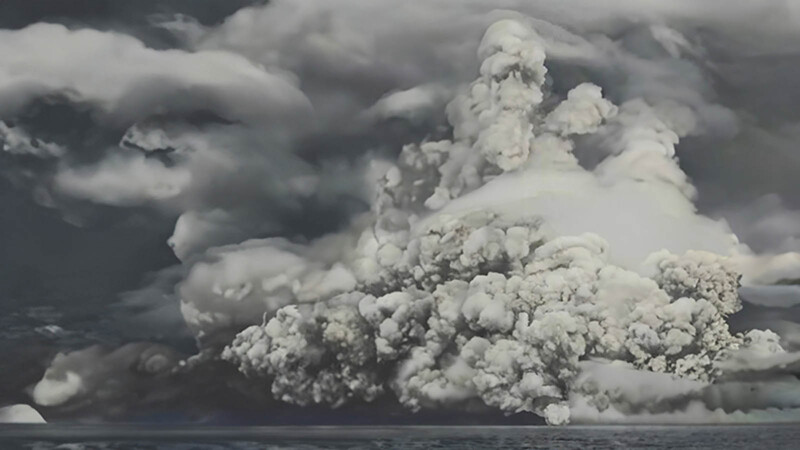
This caught us by surprise because we’re from Canada in the Northern Hemisphere, and we did not hear about that volcanic eruption. So we looked it up, and here’s what we found: “On January 15, 2022, there was a volcanic eruption in Tonga. It’s an undersea volcano that erupted in a massive explosion, probably the most violent in decades. It triggered tsunami waves and ash falls. When it erupted, a cloud of gas, water, and ash was ejected something like 57 kilometers into the atmosphere.
So these are our particles. They’ve been basically circulating around the Southern Hemisphere for over a year now, and it could last for a few more months. It will slowly fade out as the sky clears up.
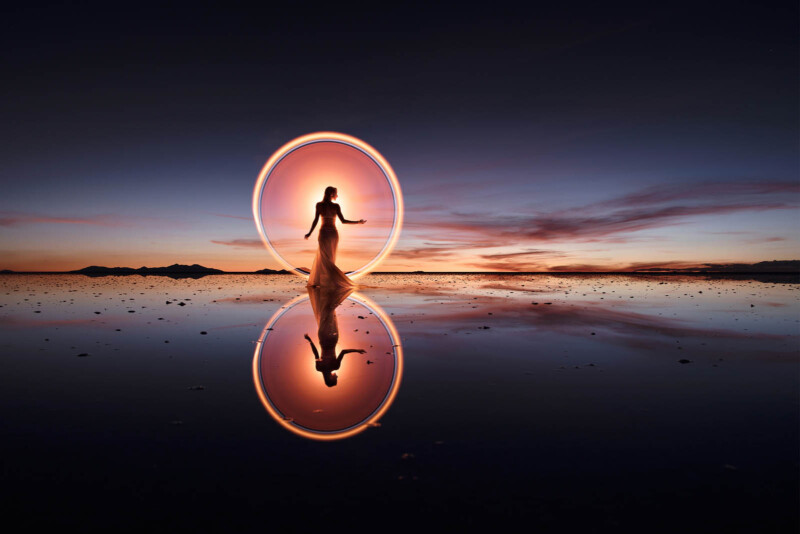
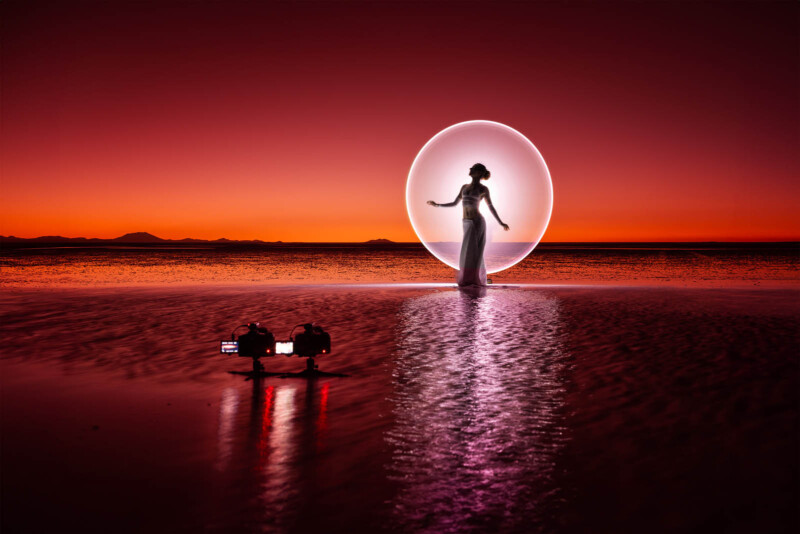
About the Salt Flats of Uyuni
The Uyuni Salt Flats, also known as Salar de Uyuni, are one of the world’s most breathtaking natural wonders and the largest salt flat on Earth. Located in southwest Bolivia, this vast expanse of salt covers an area of over 10,000 square kilometers (3,900 square miles) and is nestled within the Altiplano, a high plateau of the Andes Mountains.
The salt flats were formed as a result of prehistoric lakes that dried up, leaving behind a surreal, almost perfectly flat surface composed primarily of salt and minerals. During the wet season (from November to March), a thin layer of water covers the salt flats, creating a massive, mirror-like reflection of the sky, making it appear as if you are walking on an endless, pristine, white surface. This unique natural phenomenon attracts photographers, tourists, and adventurers from around the world.
The Uyuni Salt Flats are not only known for their stunning visual appeal but also for their vast lithium reserves, which are crucial for the production of batteries used in electric vehicles and other modern technologies. The region is also home to unique flora and fauna, including flamingos and other bird species, which can be found in the surrounding lakes and wetlands.
About the Technique
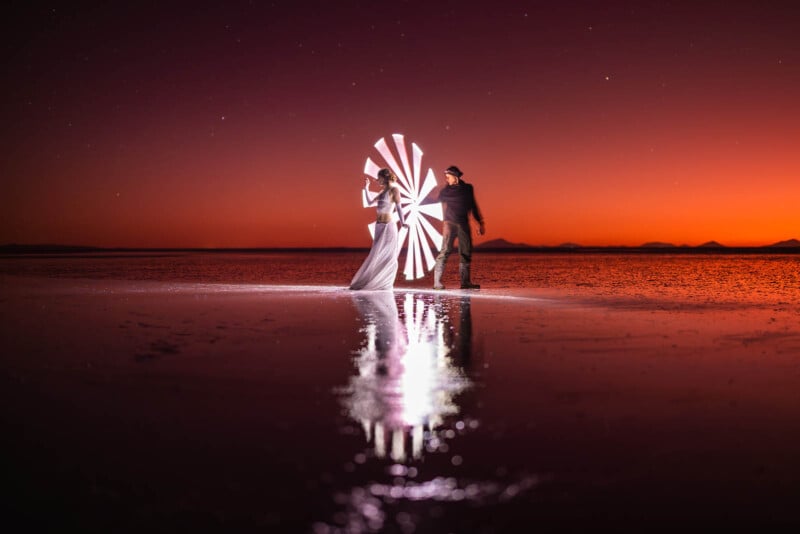
If you are new to this, here’s a quick recap about this light-painting technique: I go behind Kim Henry with my plastic tube and my flashlight. Then she holds the pose for a second while I paint behind her. I’m not visible because I’m well-aligned behind Kim. (I explain everything in detail on lightpaintingtubes.com.)
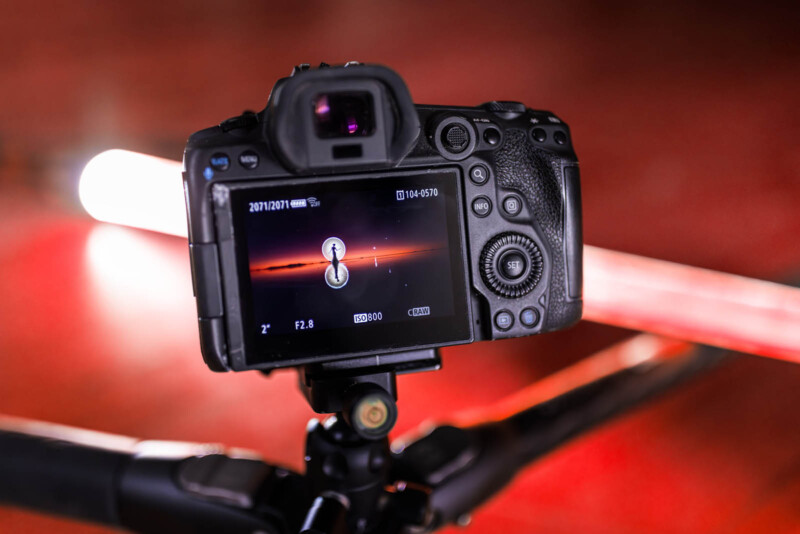
Nine Images From Nine Different Nights
We spent 19 nights this year in the Salt Flats of Uyuni, but not all nights were red/pink. These 9 images are from 9 different nights. The exposure time ranges between 1 and 8 seconds. The white balance was the hardest thing to manage as the colors were just too hard to believe. But in the end, it was pretty close to my usual workflow, starting at 5200k at the beginning of the blue hour (reddish) and ending at 3200k nearing the end of the blue hour (pinkish).
![]()
![]()
![]()
![]()
![]()
![]()
![]()
![]()
![]()
Thanks for reading, and I hope you enjoyed the photos!
About the artists: Eric Paré has built a lifestyle combining his passion for photography, travel, and light-painting. Traveling the world with his light-painting tubes, he mixes light-painting and landscape photography in incredible locations, sharing every single tip about the techniques along the way. When he’s not on the road, you can find him doing studio photography in Montréal where he performs light-painting using 176 DSLR on a full 360-degree camera array. Within the last years, he and his creative partner Kim Henry perfected the tube light-painting technique and made it widely accessible for beginners while always adding new tricks to create various visuals. By using a single tube, a flashlight, and a feather, he shows that simplicity is often the key, and he keeps bringing people together as part of the tube tribe.
Kim Henry is a professional contemporary dancer and performer fascinated with movement, nature, and human beings. Her great interest in altered states of consciousness such as hypnosis, meditation, and flow state inspires her to integrate those experiences into her artistic practice & creations. Versatile and curious, she invests her time and energy in projects that allow her to push her limits with rigor, sensitivity, and playfulness. As a freelance artist, she took part in more than 70 dance and physical theater projects since 2011.